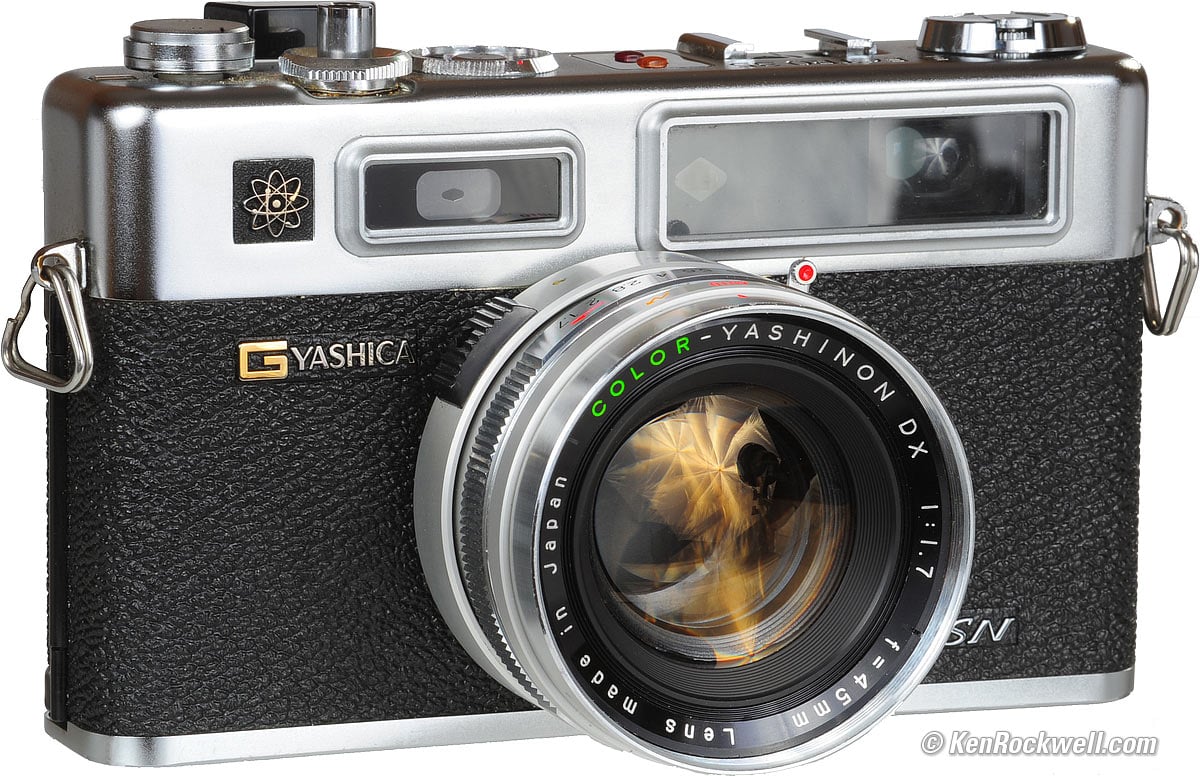The Electro 35 GSN (if black, it’s a GTN) is an all-automatic exposure (can be switched to manual) rangefinder camera. A CdS sensor settles the shutter speed. Inside the viewfinder and at the top of the camera, an orange arrow shaped indicator lamp warns for the lower speeds, inferior to 1/30th of a second and another one, red, indicates the overexposures. If you don’t see the arrows to light on , that means the exposure values are good. Also on the aperture ring, there is a little orange arrow on the left end, and there is a red one at the rigth end. So you can remember the good direction to turn the aperture ring to, according to the indicator arrows inside the finder or on the top. As everything is designed to ease the use of this camera, a scale with three symbols doubles the aperture ring: the sun, the cloud and the interior.
The only “speed” which can be selected is the “B”.(by disengaging the shutter ring from the « Auto » position and turning it).
Inside the viewfinder, a brilliant frame moves when focusing in order to correct the parallax error.
There is a little red button on the back of the camera marked « Battery Check ». When it’s pushed, a green indicator lamp placed on the right of advance lever turns on if the battery is in good condition.
Even if the camera is made (assembled) in Hong Kong, the 1,7 / 45mm is japanese and it’s an excellent product just like the others released by this brand.
This camera can be equipped with wide-angle or tele conversion lenses. Theses have conversion scales for distances. Thus, for an object situated at 1.50 m from the focal plane, this distance has to be readjusted to 0.90 m if the wide-angle lens is mounted to the camera.
Taken from:
http://www.collection-appareils.fr/
I have one of these with me now, I have made a couple of shots but haven't yet used the whole film. I'll do updates on this subject later!
And it's all for now!
.JPG)
